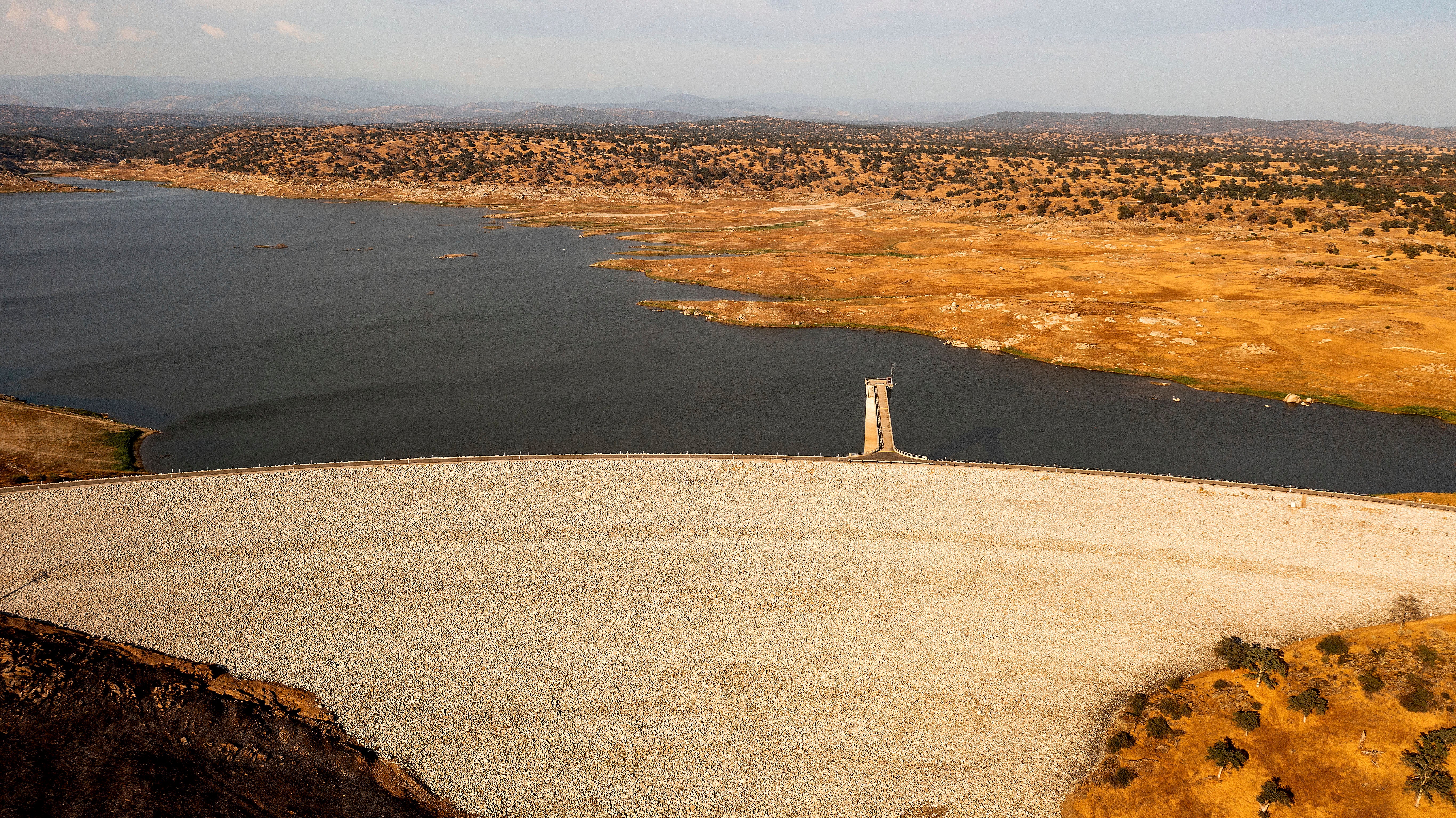EXPLAINER: Western water projects in infrastructure deal
The sweeping $1 trillion infrastructure bill approved by the Senate this week includes funding for Western water projects that farmers, water providers and environmentalists say are badly needed across the parched region

Your support helps us to tell the story
From reproductive rights to climate change to Big Tech, The Independent is on the ground when the story is developing. Whether it's investigating the financials of Elon Musk's pro-Trump PAC or producing our latest documentary, 'The A Word', which shines a light on the American women fighting for reproductive rights, we know how important it is to parse out the facts from the messaging.
At such a critical moment in US history, we need reporters on the ground. Your donation allows us to keep sending journalists to speak to both sides of the story.
The Independent is trusted by Americans across the entire political spectrum. And unlike many other quality news outlets, we choose not to lock Americans out of our reporting and analysis with paywalls. We believe quality journalism should be available to everyone, paid for by those who can afford it.
Your support makes all the difference.Included in the sweeping $1 trillion infrastructure bill approved by the Senate is funding for Western water projects that farmers, water providers and environmentalists say are badly needed across the parched region.
The Senate voted this week in favor of the legislation that seeks to rebuild U.S. roads and highways, improve broadband internet access and modernize water pipes and public works systems. The bill’s future in the House is uncertain.
The federal funding would come as the West bakes under a decadeslong drought that is straining water supplies.
A look at some ways the $8.3 billion for water projects would help bring relief in coming years.
WATER STORAGE
The plan would provide $1.15 billion for improving water storage and transport infrastructure such as dams and canals. Groundwater storage projects, which replenish underground aquifers that aren't vulnerable to evaporation, would also get funding. Western states have for years over-pumped groundwater from wells during dry years, even causing land to sink in parts of California
“California has to do more to store and otherwise stretch the use of water in wet years in order to have enough to sustain through the dry years,” said California Sen. Dianne Feinstein, a Democrat whose office helped get water provisions in the bill.
WATER RECYCLING
To help stretch existing water supplies, $1 billion would go toward projects that recycle wastewater for household and industrial use. Many states and cities already have or are developing programs that recycle storm water runoff and wastewater. The U.S. Bureau of Reclamation, which manages water, dams and reservoirs in 17 Western states, would decide which projects are funded.
DROUGHT PLAN
Prolonged drought, scorching temperatures and climate change are draining the Colorado River that supplies water to 40 million people and farmland in the West. The bill would provide $300 million for drought measures, such as conservation and storage projects, to maintain water levels at the river's reservoirs and prevent additional water cuts.
Already, the first-ever shortage declaration at the river is expected next week. Some Arizona farmers will be among those to feel the effects next year.
DESALINATION
The bill would add $250 billion for studies and projects to make sea water and brackish water usable for agricultural, industrial and municipal use. Desalination plants send ocean water through filters that extract fresh water and leave behind salty water that's often returned to the ocean. The technology is expensive but increasingly viewed as a critical way to supplement water supplies in drought prone areas.
DAM SAFETY
About $800 million would fund improvements and repairs at dams that are used for drinking water, irrigation, flood control and hydropower. Scores of dams across the U.S. are in poor or unsatisfactory condition, according to state and federal agencies. In 2017, damage at California's Oroville Dam prompted evacuation orders covering nearly 200,000 people. Feinstein's office recently said that California alone has 89 dams that are “in less than satisfactory condition.”
RURAL WATER
Another $1 billion would be dedicated for water projects in rural areas, where aging water treatment facilities and infrastructure are often in need of repair.
Taken together, the water projects funded by the infrastructure plan could make an impact in the West, said Dan Keppen, executive director of Family Farm Alliance, which lobbies for farmers, ranchers and irrigation districts.
“It’s sort of an all-of-the-above approach and that’s what’s needed,” he said.
___
AP journalist Matthew Daly contributed from Washington
___
The Associated Press receives support from the Walton Family Foundation for coverage of water and environmental policy. The AP is solely responsible for all content. For all of AP’s environmental coverage, visit https://apnews.com/hub/environment
Subscribe to Independent Premium to bookmark this article
Want to bookmark your favourite articles and stories to read or reference later? Start your Independent Premium subscription today.